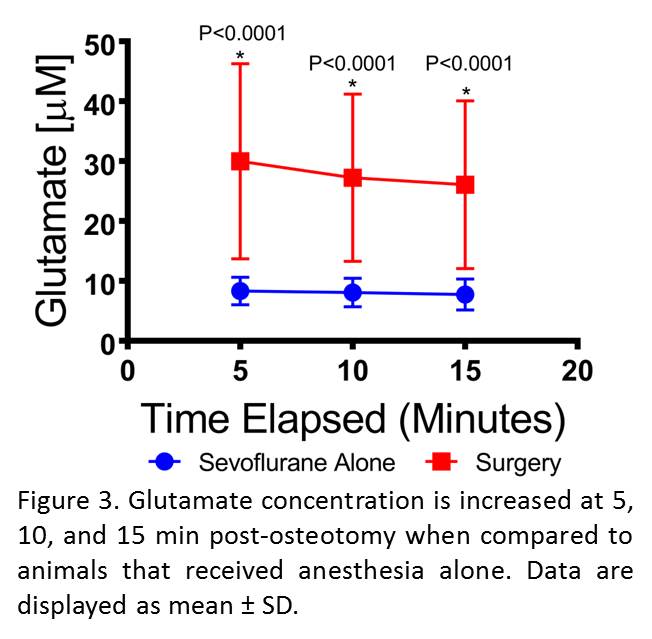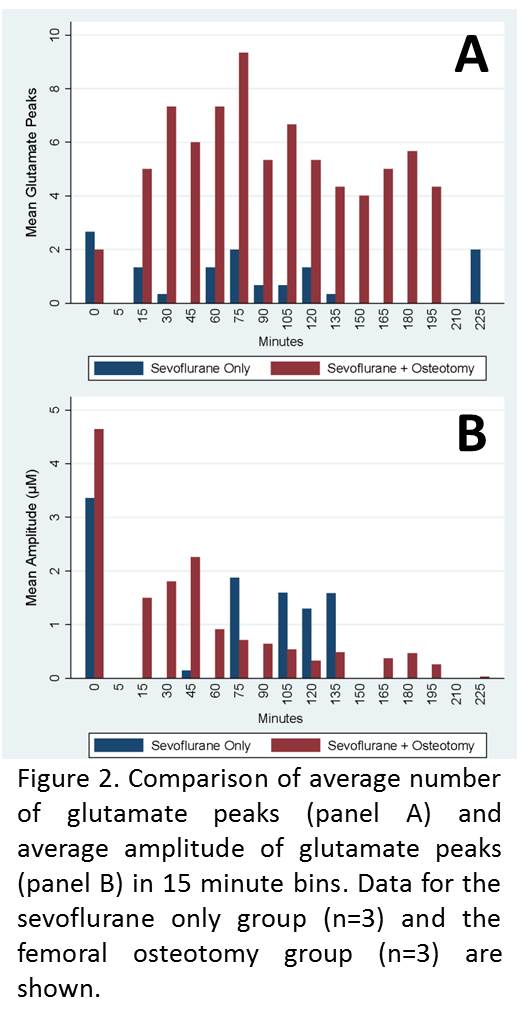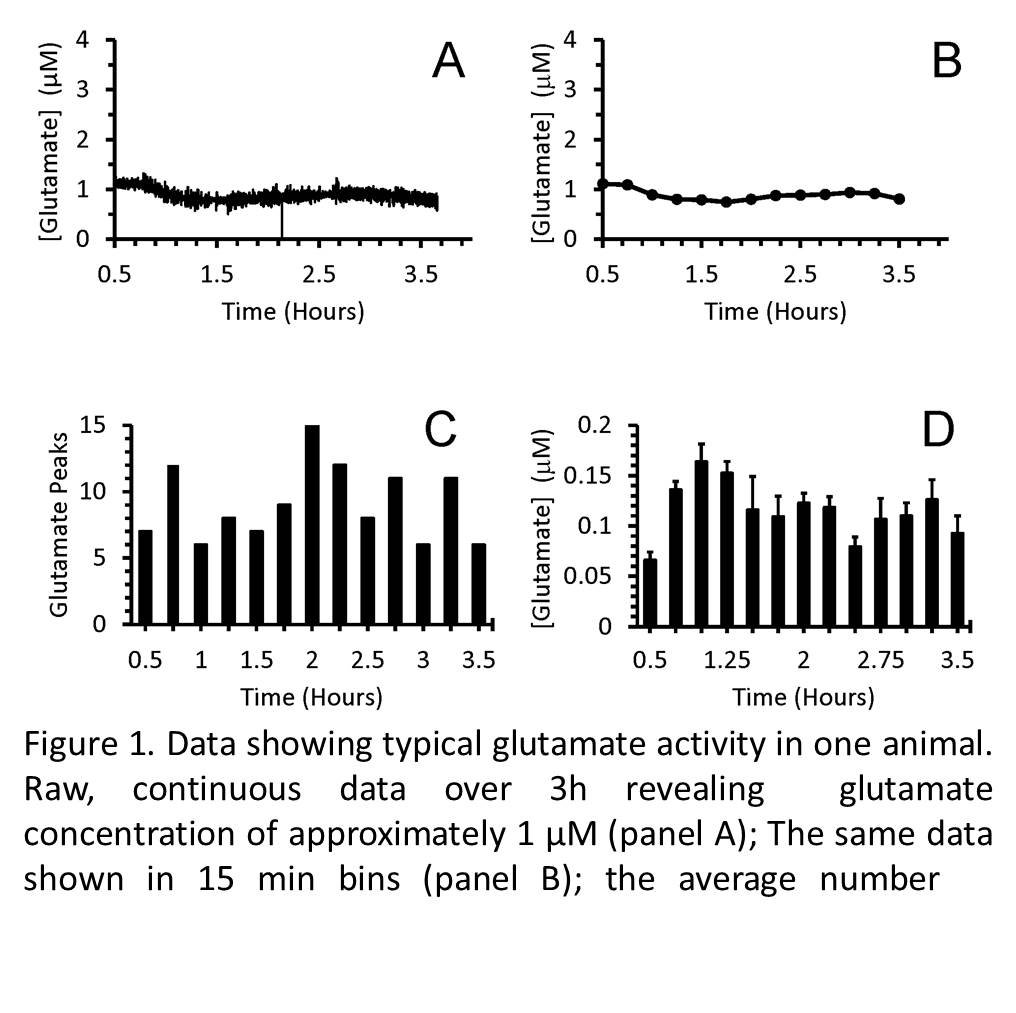YIG-380
Surgical Stress-Induced Glutamate Dysregulation in Neonatal Piglets
1Whitaker E, 2Geyer E, 2Suozzi C, 2Shetty P, 3Allen D, 3Benavidez P, 2Liu J, 2Hollis C, 4Quintero J, 4Burmeister J, 4Gerhardt G
1Nationwide Children's Hospital/The Ohio State University, Columbus, OH, United states; 2The Ohio State University, Columbus, OH, United states; 3The Ohio State University College of Medicine, Columbus, OH, United states; 4University of Kentucky Medical Center, Lexington, KY, USA
Introduction: Apoptotic neurodegeneration after anesthesia is a well-established phenomenon in animal models. However, the effects of surgical stress on the developing brain remain poorly understood. Glutamate activity in the brain is known to be dysregulated by major physiologic stress, both physical and psychological. Further, glutamate dysregulation has been shown to activate signaling pathways that lead to apoptosis. Anesthesia-induced imbalances in GABA and glutamate activity combined with glutamate dysregulation caused by major surgical stress may lead to significant dysfunction in the developing brain. We hypothesized that major surgical stress would lead to glutamate dysregulation in the developing brain of neonatal piglets.
Methods: 6 piglets were assigned to one of two groups: (1) sevoflurane alone (control, n=3) or (2) sevoflurane + major surgical stress (femoral osteotomy, n=3). Animals were anesthetized and prepared as previously described by our laboratory. Enzyme-based microelectrode arrays (MEAs) were used to continuously measure glutamate in the prefrontal cortex of piglets. Control animals received sevoflurane at 1 MAC for 3h. Animals in the surgery group underwent open femoral osteotomy, after which glutamate was recorded for 3h. At the conclusion of recording, animals were sacrificed and brain tissue was assessed for proper electrode placement.
Results: Piglets exhibited glutamate concentration and activity typical for anesthetized animals (based upon prior studies) when administered sevoflurane only at 1 MAC for 3h (Figure 1; data for 1 animal shown). Piglets that underwent femoral osteotomy showed a consistently higher number of glutamate peaks when compared to anesthesia only animals, but the amplitude of glutamate peaks was more variable. When comparing the acute change (15 minutes post-surgery), glutamate concentrations in the sevoflurane only group were significantly lower than those in the osteotomy group at 5 minutes (8.33 ± 2.31 µM vs. 30.0 ± 16.3 µM, P<0.0001), 10 minutes (8.05 ± 2.38 µM vs. 27.2 ± 14.0 µM, P<0.0001), and 15 minutes (7.73 ± 2.59 µM vs. 26.1 ± 14.0 µM, P<0.0001); Figure 3.
Conclusion: Our data support the hypothesis that an acute change in glutamate concentration and activity occurs immediately after major surgical stress when compared to animals that did not receive surgical stress.
Top














